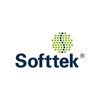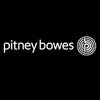Filter interviews by
Align Technology Associate Software Developer Interview Questions, Process, and Tips
Align Technology Associate Software Developer Interview Experiences
1 interview found
I applied via Referral and was interviewed before Oct 2022. There was 1 interview round.
(5 Questions)
- Q1. What is unig testing
- Ans.
Unit testing is a software testing method where individual units or components of a software are tested in isolation.
Unit testing is done to validate that each unit of the software performs as designed.
It helps in identifying bugs early in the development process.
Unit tests are typically written by the developers themselves.
Examples of unit testing frameworks include JUnit for Java, NUnit for .NET, and PyTest for Pytho
- Q2. What is the language that supports both android and ios
- Ans.
The language that supports both Android and iOS is Kotlin.
Kotlin is a modern programming language that can be used for developing applications on both Android and iOS platforms.
It is fully interoperable with Java and can be used alongside Objective-C and Swift.
Kotlin is officially supported by Google as a first-class language for Android development.
- Q3. How many design patterns in android
- Ans.
There are several design patterns in Android, including Singleton, Observer, Factory, and Adapter.
Some common design patterns in Android include Singleton, Observer, Factory, and Adapter.
Design patterns help in creating reusable and maintainable code in Android development.
Singleton pattern ensures that a class has only one instance and provides a global point of access to it.
Observer pattern is used for implementing e...
- Q4. How many languages we have to support android
- Ans.
We have to support multiple languages for Android, including but not limited to English, Spanish, French, German, Chinese, Japanese, etc.
English
Spanish
French
German
Chinese
Japanese
- Q5. Mvvm architecture
Skills evaluated in this interview
Top trending discussions






Interview questions from similar companies

I applied via LinkedIn and was interviewed before Jul 2021. There were 2 interview rounds.

(2 Questions)
- Q1. Uipath questions , orchestrator
- Q2. Automation anywhere,
Interview Preparation Tips

Senior Software Engineer Interview Questions & Answers
Eastern Software Systemsposted on 24 Feb 2024
I applied via Walk-in and was interviewed before Feb 2023. There were 2 interview rounds.
It was easy as simple as that
(3 Questions)
- Q1. What is static keyword with example
- Ans.
The static keyword in programming is used to declare variables, methods, or classes that belong to the class itself rather than instances of the class.
Static variables are shared among all instances of a class
Static methods can be called without creating an instance of the class
Static classes cannot be instantiated and are used for grouping related methods together
- Q2. What is inheritance
- Ans.
Inheritance is a concept in object-oriented programming where a class can inherit attributes and methods from another class.
Allows a class to inherit attributes and methods from another class
Promotes code reusability and reduces redundancy
Creates a parent-child relationship between classes
Derived class can access public and protected members of the base class
Example: Class Car can inherit from class Vehicle to reuse co
- Q3. What is method overloading and method overriding
- Ans.
Method overloading is having multiple methods in the same class with the same name but different parameters. Method overriding is redefining a method in a subclass with the same name and parameters as in the superclass.
Method overloading allows a class to have multiple methods with the same name but different parameters.
Method overriding occurs in a subclass when a method has the same name and parameters as in its supe...
Interview Preparation Tips
Skills evaluated in this interview

Software Engineer Interview Questions & Answers
Eastern Software Systemsposted on 16 Oct 2021
I applied via Naukri.com and was interviewed in Sep 2021. There was 1 interview round.
Interview Questionnaire
1 Question
- Q1. Oracle D2K related questions
Interview Preparation Tips

Senior Software Engineer Interview Questions & Answers
Eastern Software Systemsposted on 10 Apr 2023

(2 Questions)
- Q1. Tell me about yourself,
- Q2. What are the projects have done
(1 Question)
- Q1. Tell me your self
Interview Preparation Tips

Software Engineer Interview Questions & Answers
Eastern Software Systemsposted on 19 Mar 2024
I appeared for an interview before Mar 2023.
Basic aptitude test with 10 questions of maths and 10 questions of English and 10 questions of reasoning.
Interview Preparation Tips

Software Engineer Interview Questions & Answers
Eastern Software Systemsposted on 15 Oct 2024
I applied via Job Portal and was interviewed before Oct 2023. There were 3 interview rounds.
(2 Questions)
- Q1. Explain mvvm architecture
- Ans.
MVVM is an architectural pattern used in software development that separates the user interface from the business logic.
Model represents the data and business logic
View displays the data and interacts with the user
ViewModel acts as a mediator between the Model and View, handling user input and updating the Model
- Q2. Discuss about design patterns
- Ans.
Design patterns are reusable solutions to common problems in software design.
Design patterns help in creating flexible, maintainable, and scalable software.
Examples of design patterns include Singleton, Factory, Observer, and Strategy.
Design patterns are categorized into three groups: creational, structural, and behavioral patterns.
(2 Questions)
- Q1. Benefits of swift programming
- Ans.
Swift programming offers fast performance, safety, and interoperability with Objective-C.
Fast performance due to being compiled language
Safety features like optionals and type interference
Interoperability with Objective-C for using existing code and libraries
- Q2. How to post data to server using url session
- Ans.
Use URLSession to post data to a server
Create a URL request with the server URL
Set the request method to POST
Add the data to the request body using Data or JSONSerialization
Create a URLSessionDataTask with the request and resume it
(1 Question)
- Q1. Relayed to salary negociation
Skills evaluated in this interview

Software Engineer Interview Questions & Answers
Eastern Software Systemsposted on 27 Mar 2025
I appeared for an interview in Sep 2024, where I was asked the following questions.
- Q1. What is Apex?
- Ans.
Apex is a strongly typed, object-oriented programming language used for Salesforce development.
Apex is similar to Java, with a syntax that is easy to understand for Java developers.
It is used to write custom business logic and automate processes in Salesforce applications.
Apex runs on the Salesforce servers, ensuring efficient execution and scalability.
Developers can create triggers, classes, and web services using Ape...
- Q2. What are the main functionalities of artificial intelligence (AI)?
- Ans.
AI enables machines to perform tasks that typically require human intelligence, enhancing efficiency and decision-making.
Machine Learning: Algorithms that improve through experience, like recommendation systems on Netflix.
Natural Language Processing: Understanding and generating human language, as seen in chatbots like Siri or Alexa.
Computer Vision: Analyzing and interpreting visual data, used in facial recognition sys...
- Q3. What is Guardrails?
- Ans.
Guardrails are safety measures or guidelines that help ensure systems operate within defined parameters.
Guardrails provide boundaries for acceptable behavior in software development.
They help prevent errors by enforcing coding standards and best practices.
For example, in CI/CD pipelines, guardrails can prevent deployments to production without passing tests.
In API development, guardrails can limit the types of requests

I applied via LinkedIn and was interviewed before Jan 2023. There was 1 interview round.
(4 Questions)
- Q1. Basic ios Questions No DS questions
- Q2. Basic swift quesions
- Q3. In App Purchase
- Q4. Hardware Device connectivity

I applied via Recruitment Consulltant and was interviewed before Mar 2022. There were 6 interview rounds.

(2 Questions)
- Q1. Communication and behavioral skills
- Q2. Introduction, Skill set, Relevant experience
(2 Questions)
- Q1. AWS - EC2, Lambda, VPC, Route53, Cognito, Cloudwatch, Kinesis, API Gateway
- Q2. ITIL - problem management, recently handled outages. SLA vs SLO. KPIs
(2 Questions)
- Q1. DevOps - SDLC explanation, Apache Tomcat, Linux Administration, Docker and Shell scripting
- Q2. Git, Python, Monitoring tools
(1 Question)
- Q1. Salary expectations and other benefits discussion
(1 Question)
- Q1. Salary Negotiation and salary structure explanation
Interview Preparation Tips
Align Technology Interview FAQs
Tell us how to improve this page.
Align Technology Interviews By Designations
- Align Technology Front end Developer Interview Questions
- Align Technology Research Associate Interview Questions
- Align Technology NOC Engineer Interview Questions
- Align Technology HR Executive Interview Questions
- Align Technology Associate Software Developer Interview Questions
- Align Technology Clinical Specialist Interview Questions
- Align Technology Senior Software Engineer Interview Questions
- Align Technology Business Analyst Interview Questions
- Show more
Interview Questions for Popular Designations
- Software Developer Interview Questions
- Senior Software Developer Interview Questions
- Lead Software Engineer Interview Questions
- Software Development Engineer II Interview Questions
- Software Engineer Interview Questions
- Software Development Engineer 1 Interview Questions
- Software Engineer Level 1 Interview Questions
- Java Software Developer Interview Questions
- Show more
Align Technology Associate Software Developer Interview Process
based on 1 interview
Interview experience
Interview Questions from Similar Companies
Align Technology Associate Software Developer Reviews and Ratings
based on 1 review
Rating in categories
|
Practice Development Manager
22
salaries
| ₹7.7 L/yr - ₹13.1 L/yr |
|
Software Engineer
20
salaries
| ₹6.6 L/yr - ₹21.4 L/yr |
|
Software Developer
8
salaries
| ₹7.1 L/yr - ₹29.3 L/yr |
|
Data Analyst
7
salaries
| ₹4.8 L/yr - ₹11.2 L/yr |
|
Data Engineer
6
salaries
| ₹6 L/yr - ₹24 L/yr |

Actalent Services

Pitney Bowes

Stefanini

Softtek
- Home >
- Interviews >
- Align Technology Interview Questions >
- Align Technology Associate Software Developer Interview Questions











